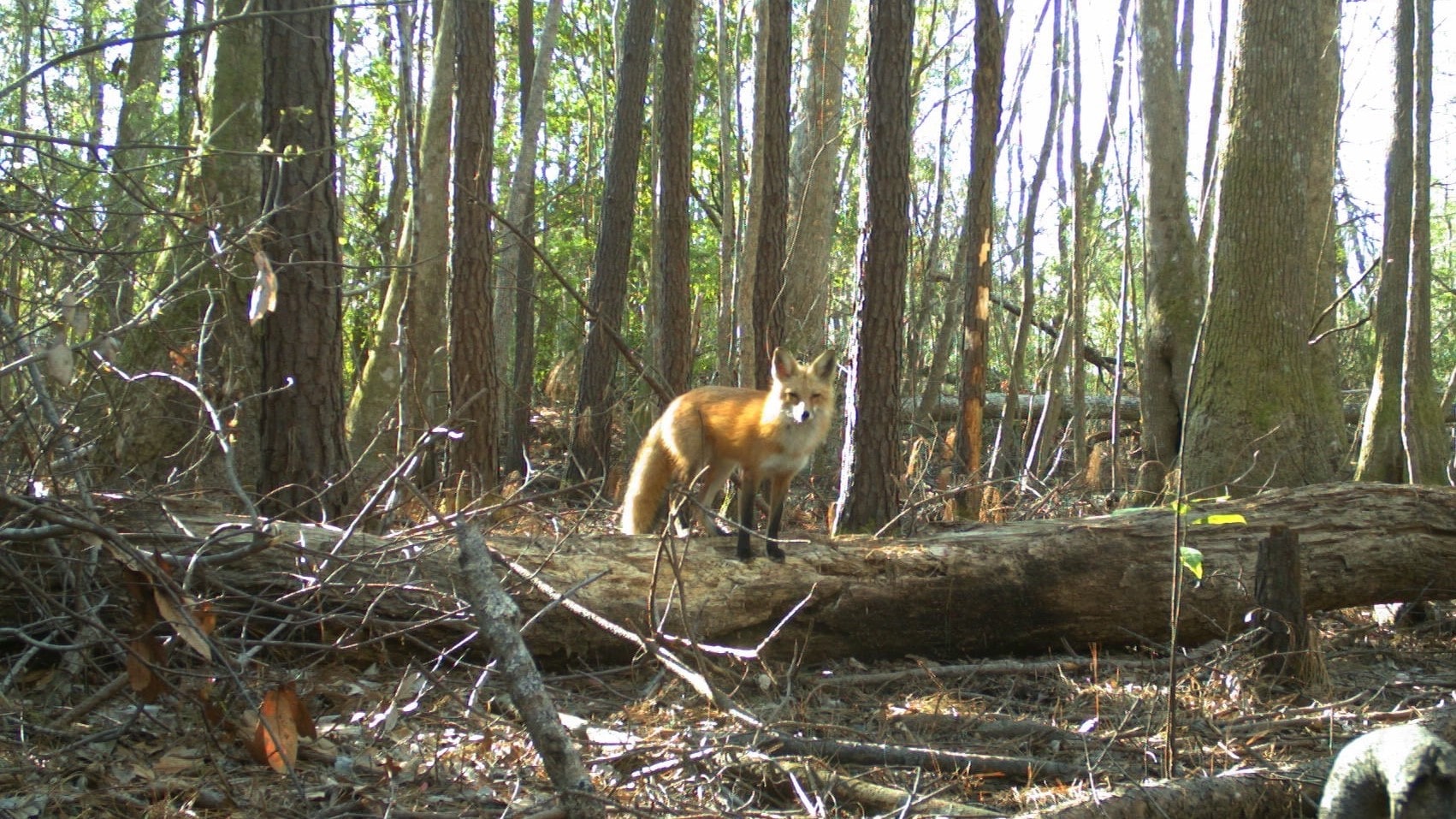The Answer to a Red Fox Mystery Is in Their DNA

Scientists know that Europeans brought red foxes to North America, likely for hunting, while other red foxes escaped into the wild from fur farms. But are some red foxes found on the East Coast, and in North Carolina, native?
According to wildlife genetics expert Liz Kierepka, the answer to this mystery is in their DNA.
The Abstract spoke to Kierepka, who has a joint appointment at NC State and at the North Carolina Museum of Natural Sciences, about what we know so far about the origin of red foxes, Vulpes vulpes, in North Carolina, and in North America more broadly.
The Abstract: Are there native red foxes in the Southeast?
Liz Kierepka: Based on genetic studies, we think the vast majority of red foxes in the Southeast are native to North America and mostly belong to a line of foxes known as the eastern lineage. The eastern lineage is one of three relatively well-established, genetically distinct lineages of red foxes in North America. All of these lineages were separated during the Ice Ages, and we can see differences in their DNA today. There is also another group in Alaska that is more closely related to Asian red foxes.
We know there was an introduction of European red foxes in the mid-Atlantic region of the eastern United States. There is a higher proportion of non-native foxes in Virginia and Maryland because of that introduction, which was dated to about the 1700s. There were also foxes bred for their fur, and many foxes either escaped or were released. A lot of those foxes have interbred with our native foxes.
TA: How far back do foxes go in North America?
Kierepka: Red foxes originated in the Middle East, and then they expanded across the globe. They crossed from Eurasia over the land bridge between Russia and Alaska about 400,000 years ago. When the Ice Ages occurred, previous habitats were covered in ice and foxes had to re-arrange themselves in unglaciated areas. Because of the glaciers, certain populations of foxes were no longer in genetic contact. They then evolved into the genetically different groups that you can still see today.
TA: How do you know all this?
Kierepka: Red foxes have been subject of much genetic study across the years. Researchers from the University of California, Davis were able to identify the three genetically distinct groups of red fox in North America by studying their DNA. The more differences that occur across their DNA sequences, the more differentiated the animals are.
In these genetic analyses, researchers looked at the DNA from the mitochondrion. Mitochondrial DNA is nice for building phylogenetic trees because it often reflects isolation that occurred during the Ice Ages. Mitochondrial DNA is much easier to get than nuclear DNA. There is one nucleus per cell whereas there are hundreds to thousands of mitochondria. You can get the DNA from hair samples, fecal samples or even saliva.
TA: What about red foxes in North Carolina – are they native or were they introduced?
Kierepka: The thing is about red foxes in North Carolina is that we haven’t really looked at the population here closely. In the study that characterized red fox genetics for North America, there were only a handful of samples from North Carolina. Of the few samples that they ran, one was likely a fur farm individual and two were native. It is likely that there are native foxes here, but we don’t know the frequency. We just do not have enough samples.
There are historical records where people that would speculate about this question. They suggested the possibility of the introduction of European foxes, but these are from records from the early 1800s and 1900s. There are multiple accounts saying they may have been brought over, but it is hard to verify these records.
TA: Why is it important to try to answer questions like this?
Kierepka: It’s important for understanding how species can adapt to new environments. When you have invasive species coming in, it can cause invasive and native species to breed together. This interbreeding can disrupt populations that are adapted to certain environments.
In California, for example, the non-native foxes do really well in human-dominated landscapes, while the native foxes prefer unaltered habitats. Some of these native foxes are on the brink of extinction due to habitat loss and climate change. We might lose some of this genetic diversity that we did not know existed until we looked. I do not know if that’s happening in North Carolina or not, but we will only find out if we study it.
In conservation, one of the goals is to preserve as much genetic diversity as we can because it can help species adapt in the future with habitat loss and climate change.
TA: Are gray foxes and red foxes the same species?
Kierepka: Gray foxes are the oldest canid in the dog family. They are so divergent from red foxes; I would be flabbergasted if they hybridized. It’s like a rat and a squirrel interbreeding successfully.
- Categories:


